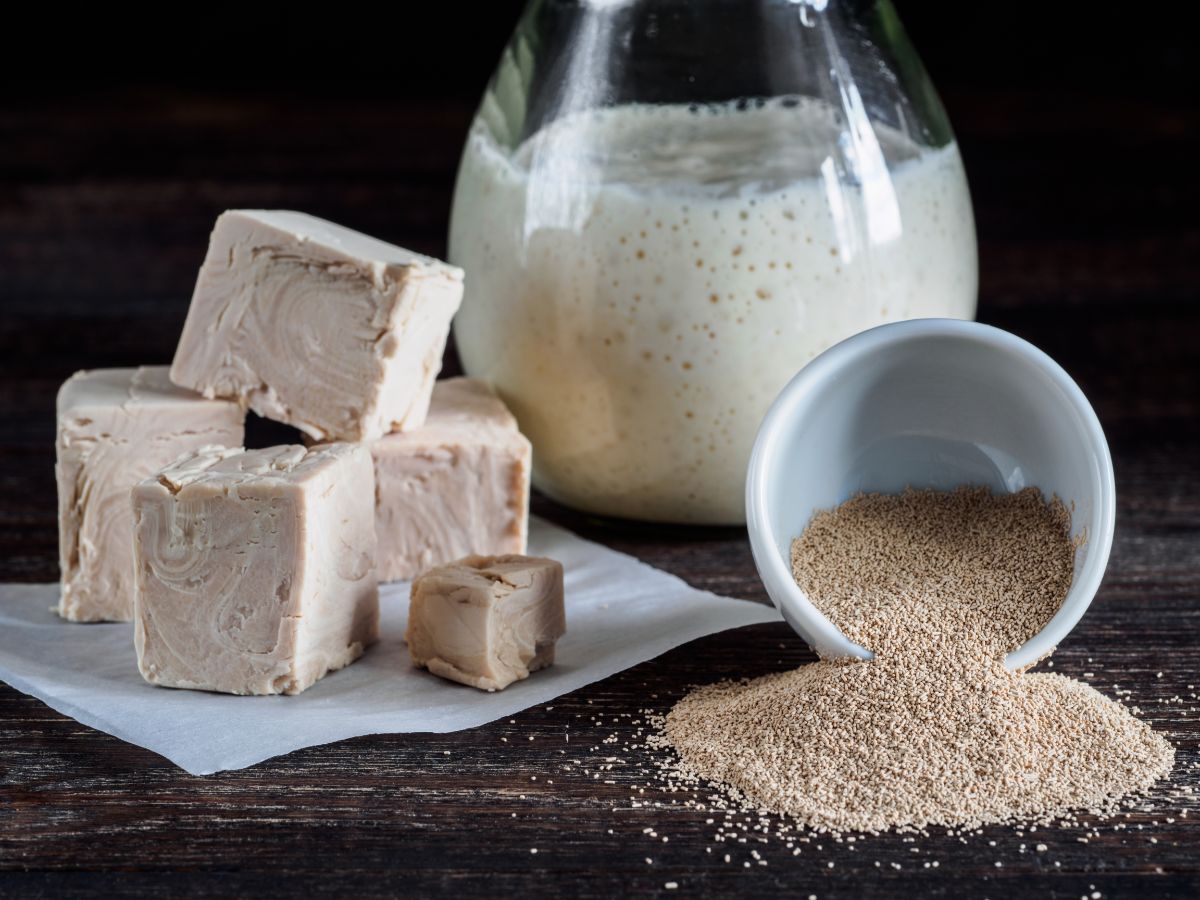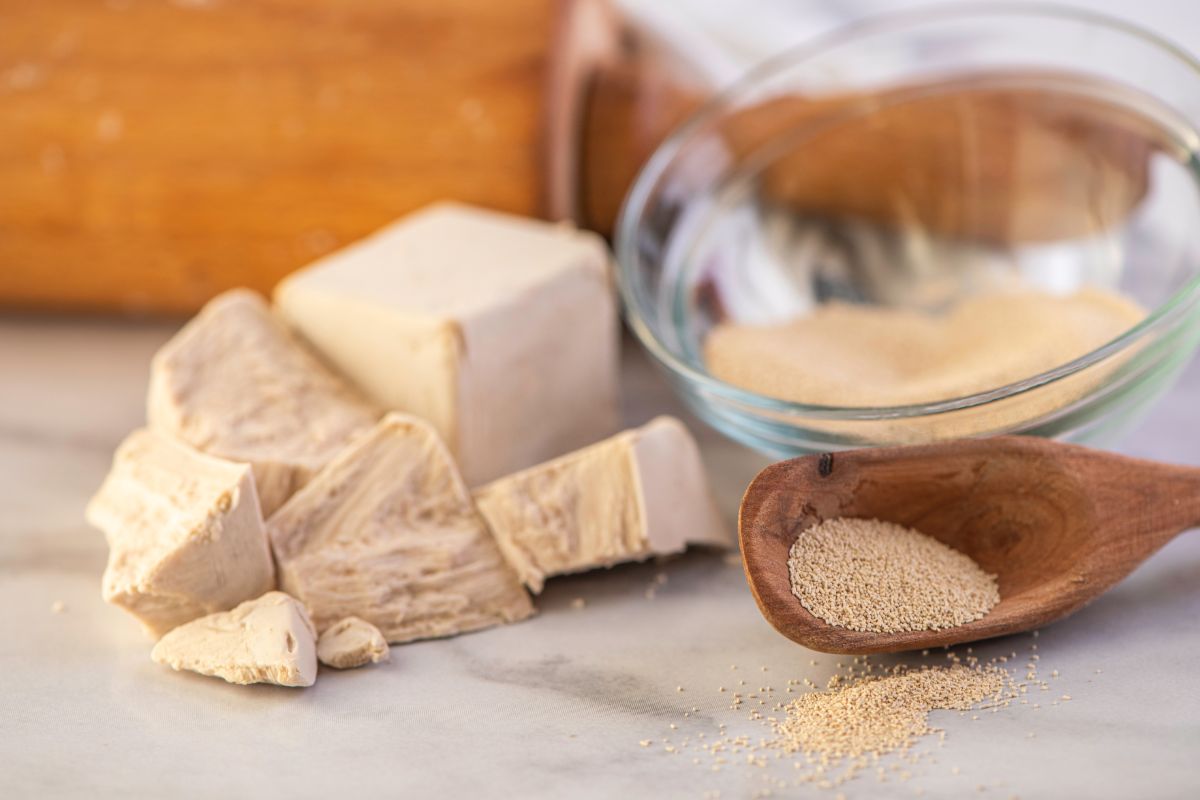If you have opened your package of yeast, either instant or dry, you can store it in the refrigerator and use it for up to four months.

If you have not opened the package, it should remain usable for two to four months beyond the ‘best by’ date stamped on the package. The length of time yeast will last significantly depends on both the ‘best by’ date and how you store it.
A jar of fresh yeast must be refrigerated as soon as opened. This form of yeast is a live organism that will remain active and usable for about two to three weeks after it was produced.
These jars also have a ‘best by’ date stamped on them, and you should use the yeast up to that date, or shortly after.
How Long will Stored Yeast Work in Bread?
Yeast is a leavening agent and contains active enzymes enabling it to create carbon dioxide when it gets wet.
This product is your starting point when making bread or other baked goods that have to rise.
For two years after the yeast has been produced and packaged, it should continue to create carbon dioxide and help your bread rise when you bake with it.
If you have stored the yeast properly, it can even last long beyond the ‘best by’ date.
If you have an unopened dry active yeast that was stored in your cupboard or pantry, it should last two to four months beyond the ‘best by’ date.
If the yeast was stored in the refrigerator, it should last up to four months beyond the ‘best by’ time.
A cake of yeast unopened will last one to two weeks in your cupboard past the ‘best by’ date, and two to three months in the refrigerator.
If you have opened the active dry yeast, it will last four to six months if properly sealed, and stored in the refrigerator, and up to six months in the freezer.
Compressed or cake yeast that has been opened will last up to four months in the refrigerator, but it is not recommended to be frozen once you have opened the package or jar.
How to Tell Your Yeast Has Gone Bad
It is important to use food safety and proper hygiene when baking to prevent foodborne illness.

For this reason, it is important to know whether or not your stored yeast is usable or has gone bad.
As it gets older, yeast will begin to change color. It starts a tannish grey and will become darker brown and clump together when it ages.
The problem with yeast is it will go bad before you notice the changes. Before you bake any product with yeast you have stored, you should perform a yeast freshness test.
Yeast Freshness Test- Dissolve one teaspoon of sugar in a half cup of water that is between 110 and 115 degrees Fahrenheit.
The temperature of the water is important, so you should use a thermometer. If the water is hotter than 120 degrees Fahrenheit, it will kill the yeast.
If you do not have access to a thermometer, make sure the water feels warm and not hot before using.
Stir your package of yeast into the sugar and warm water mixture until all of the yeast has dissolved. Let this mixture sit on the cupboard for about ten minutes.
Within this time, you should see a foam begin to form. The foam means the yeast is still good, and you can use it in your recipe. If it does not foam, you should throw it away and buy new yeast.
Use the tested yeast right away and remember to adjust the water the recipe calls for by the half cup of water you used in the test.
Storing Yeast So It Will Last
Because yeast is a living organism, it will become less active as time goes by. Like other foods, it will perish even faster when exposed to heat, moisture, or air.
If you have not opened your yeast package, it will store well in a dry, cool cupboard. If it is opened, make sure to seal it well so no air can get into the package and store it in either refrigerator or freezer.
Is There a Substitute for Yeast?
We all know time can get away from us, and some of us do not always remember to write down all ingredients needed on our shopping list.
These scenarios may find you without yeast or with bad yeast when you begin a new bread project.
Yeast is the best and first choice ingredient in your bread baking project, but if you find yourself in the middle of baking and have no good yeast, there are a couple of substitutes.
Your first option to substitute yeast is to use equal parts of baking soda with an acid such as lemon juice or vinegar to equal the amount of yeast in your recipe.
If the recipe calls for one teaspoon of yeast, you can replace it with half a teaspoon of baking soda and half a teaspoon of the acid.
When the acid comes into contact with the baking soda, it will create a chemical reaction that generates carbon dioxide bubbles.
These bubbles are what will make your bread rise. For this substitute to work as yeast in your bread, you have to add it after all other ingredients have been put into your recipe. You will also have to put the dough into the oven right away.
Your second option is to replace the required yeast amount with equal amounts of baking powder.
Baking powder has both baking soda and cream of tartar (acid) in it so that you can add just the baking powder.
The baking powder can be added to the other dry ingredients, and when you add the liquid, it will begin to bubble and make your dough rise.
Baking powder is a double-acting product as it will rise twice. The first rise happens when you add it to the other ingredients, and again when you bake the bread.
If your recipe already has any of these; baking soda, baking powder, or acid included in it, your substitute will be an addition to the amounts called for.already.
